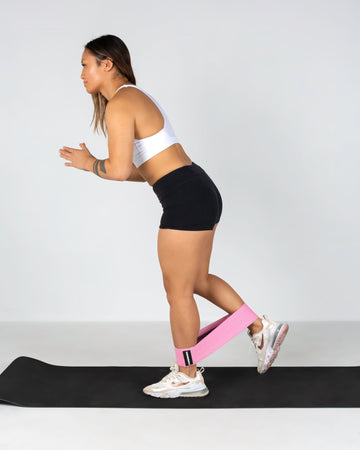Undergoing rehabilitation is not always easy. Recovering from your injury takes commitment and dedication to the rehabilitation process. In your journey to recovery, one thing that you might find highly useful is a resistance band.
Many rehabilitation professionals recommend the usage of resistance bands during the process. It helps a lot with your corrective exercise, helping you regain muscle strength.
These bands have been used in corrective exercises since the ‘60s. It was used as an alternative to recovering patients lifting weights. Now, it is valued in rehabilitative exercise and widely used by many facilities.
Here are some ways that you can maximise your recovery with resistance bands.
Find the Right Band
Before investing in a resistance band, it’s important to note that most modern models come in various types. You must determine which type of band you will need for your recovery. There is a colour-coded resistance level assigned to each band.
One form of resistance band comes as a continuous loop, while others come in tubular form with handles on each end. For rehabilitation, it is recommended to use flat bands for exercise. These bands are about three and six feet tall and come in a loop.
Tubular bands, on the other hand, are slightly more durable for use. Most models are adjustable in length. While they do come with padded handles, it is less commonly used for rehabilitation.
Learn the Phases of Rehabilitation
When you undergo the rehabilitation process, it’s always a good idea to ask your physical therapists about how it will go.
Your therapist should give you an initial assessment to determine how to tackle your recovery. They will observe your passive and active movement to check your overall physical conditions. Generally, there are certain steps you must take to complete your rehabilitation.
Here are some of the phases of your rehabilitation.
Phase One
Phase one is The Acute Phase. This is where you will be assessed and monitored for signs of further injury. The focus here is to speed up the healing process by treating any symptoms of your injury.
Professionals will make use of NSAIDs, and prescribe rest and ice and heat treatments. These are all preventative measures to make sure your injury can withstand the remaining phases of physical therapy.
Phase Two
Phase two is the brunt of the recovery. This is where you aim to prevent further injury and pain. You will complete a corrective exercise program curated to help you regain muscle balance, build body strength and joint stability.
For this phase, the goal is to improve your neuromuscular control and coordination little by little.
Phase Three
The final phase is what’s called The Functional Phase. Here, it is assumed that you have built enough strength to be able to function as close to normal as you can. You won’t necessarily be needing the help of physical therapists anymore. However, you can if you want to.
If you opt to train on your own, remember that there are set guidelines in place to help you adjust to your new lifestyle.
Conclusion
Resistance bands are a great, professionally recommended tool that can help you on your road to recovery. These bands are great for corrective exercise and will help you build back your muscle strength in no time at all.
At POWERBANDS®, we provide the best resistance bands to help you bulk up your muscles and glutes in no time. Our quality bands can help with your strength training and improve your rehabilitation journey. Check out our catalogue now.








